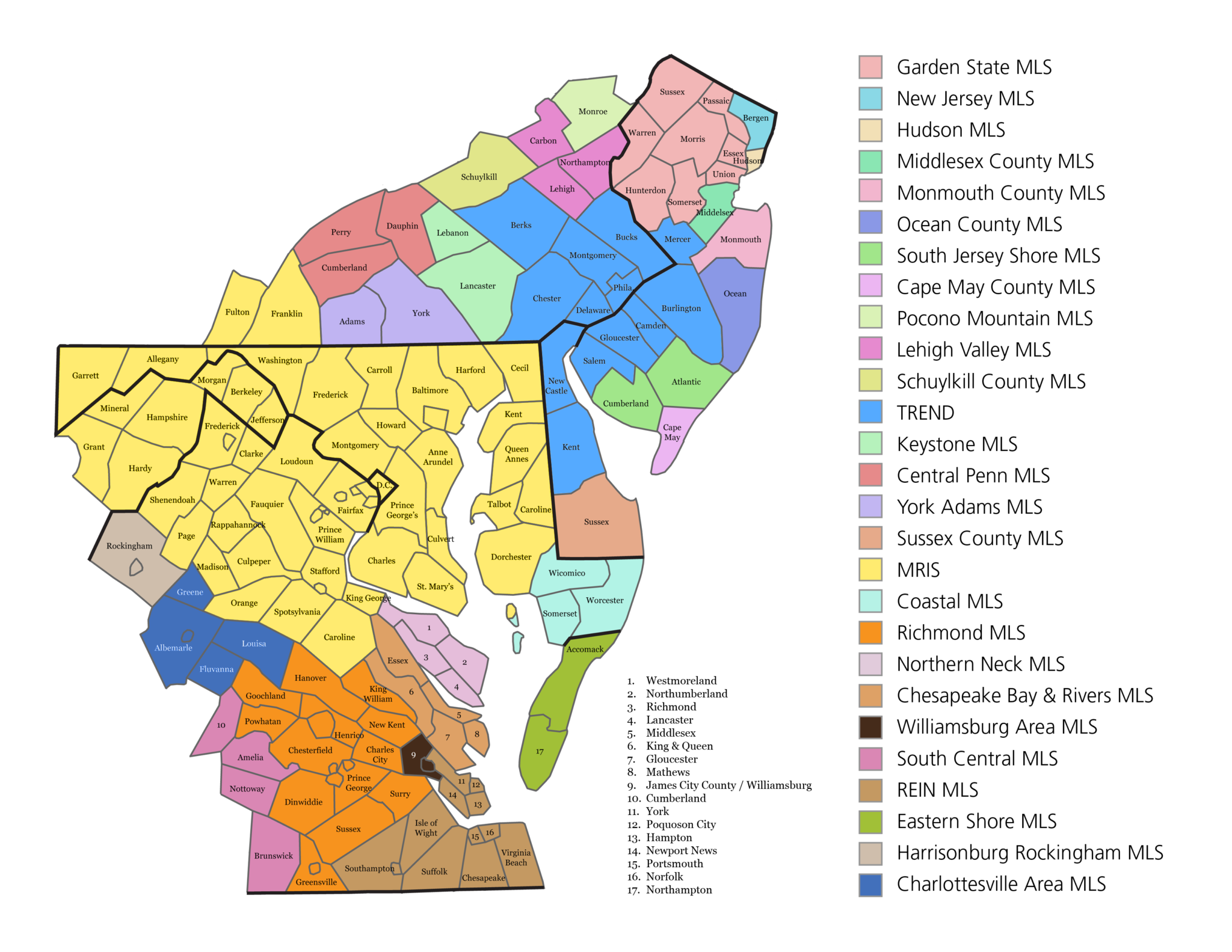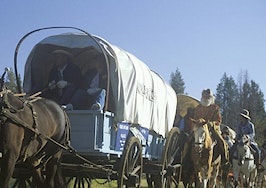- By spring, MRIS and TREND will release the first product of their MLS Evolved merger project: a combined listing feed for brokers that belong to both MRIS and TREND.
- The feed -- and eventually, the merger -- will reduce costs and hassles for brokers currently belonging to both MLSs, MRIS and TREND say.
- Complete consolidation between the two MLSs will also bring access to listings over a larger territory in one place and, potentially, fewer MLS and association fees.
Two of the nation’s biggest MLSs will start offering their shared broker members a combined listing data feed by this spring, as part of a move to join forces.
In September, MRIS (Metropolitan Regional Information Systems Inc. based in Rockville, Maryland) and TREND (The Delaware Valley Real Estate Information Network Inc. based in the Philadelphia area) announced their intention to merge and usher in the “next era of MLS.”
In November, MRIS and TREND’s consolidation project, “MLS Evolved,” gained ground when the Schuylkill County Board of Realtors joined the fold.
Now, MRIS and TREND will offer brokers that belong to both MLSs a combined data feed for their IDX (Internet data exchange), broker back-office and other data needs.

Coverage area map for MRIS, TREND and neighboring MLSs
“When brokerages operate across multiple marketplaces, they must aggregate information from multiple data feeds, apply the appropriate display rules for each MLS, and pay redundant technology costs, all in order to have a unified IDX search on their own websites or improve brokerage operations,” said Sandra Troccoli, director of information technology and website services for Berkshire Hathaway HomeServices Homesale Realty, in a statement.
BHHS Homesale Realty has 29 offices in Maryland and Pennsylvania.
“This is a new opportunity that will reduce technology costs and cumbersome management of duplicate feeds. It highlights the importance of MLS consolidation from a technology standpoint,” Troccoli said.
‘We can spend more time focusing on our business and our clients’ needs’
About 50 brokers, some with thousands of agents, belong to both TREND and MRIS, Sharon Lukens, TREND’s director of design and communications, told Inman.
Agents who subscribe to both MLSs will not be able to obtain a combined feed at this point, unless they frame their broker’s IDX search on their own site, Lukens said in an email. She estimated that about 900 subscribers will benefit from the combined data feed for IDX.

Sharon Lukens
“[K]eep in mind that once the consolidation is complete, all 70,000-plus subscribers of the new MLS will be eligible for the combined IDX feed,” she added.
The number of listings in the feed will depend on which feed brokers choose. An IDX feed with only on-market listings will have about 70,000 listings, while an IDX feed with both on- and off-market listings could include nearly 700,000 listings going back three years, Lukens said.
In a broker back-office feed, brokers are entitled to get all of their listings for as long as they’ve belonged to the MLS, Jonathan Hill, MRIS’ vice president of marketing and communications, told Inman.
MRIS board chair Jon Coile said the combined feed was “the first tangible benefit to be delivered as an advantage of MLS consolidation.”

Jon Coile
“It brings economies of scale, common policies, and simplified processes to brokers in the Mid-Atlantic region,” he said in a statement.
“Without the challenge of administering multiple content feeds, we can spend more time focusing on our business and our clients’ needs.”
Fewer MLS, association fees
Several MLSs have indicated that they’d like to continue to be part of ongoing merger talks, but nothing is yet final, Lukens said.
Those who join the project can look forward to the advantages of complete consolidation in mid-2016, including diminishing the cost and hassles of multiple MLS fees and entry into multiple MLSs as well as accessing a larger market inventory in one place, Lukens said.

Jonathan Hill
The MRIS -TREND project aims to consolidate MLSs, not associations. But brokers and agents may also potentially pay fewer association fees as a result of the merger, Hill said. This is because once an agent belongs to a single shareholder association of the new, combined MLS, he or she will have access to the MLS’s complete inventory. This means that agents and brokers won’t have to join as many associations in order to belong to the MLS and have access to that MLS’s inventory, he said.
“The need to belong to multiple associations is obviated by their membership in a shareholder that is a shareholder in the consolidated entity,” Hill said.
Editor’s note: This story has been updated to clarify that the MRIS-TREND project aims to consolidate MLSs, not associations.









